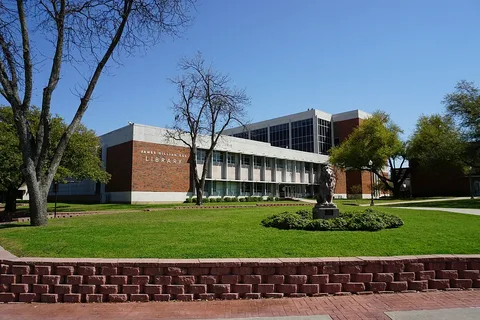Introduction
In the ever-evolving landscape of higher education, research universities stand as beacons of innovation and progress, driving advancements across a multitude of disciplines. Among these institutions, Texas A&M University (TAMU) emerges as a prominent figure, recognized for its exceptional research output, transformative impact, and commitment to shaping the future. Located in College Station, Texas, TAMU is not only one of the largest universities in the United States but also a leader in research and development, significantly contributing to various fields ranging from engineering and sciences to agriculture and business.
As we delve into the world of Texas A&M University, we will explore its role as a leading research university, examining its research initiatives, academic programs, and contributions to society. By understanding what makes TAMU a trailblazer in research and innovation, prospective students, researchers, and collaborators can make informed decisions about engaging with this influential institution.
Understanding Texas A&M University
A Brief Overview of TAMU
Founded in 1876, Texas A&M University is a public research university known for its rich history, expansive campus, and a strong commitment to excellence in education and research. It is a member of the prestigious Association of American Universities (AAU) and holds a significant place in the landscape of American higher education.
Key Facts:
- Location: College Station, Texas
- Enrollment: Over 70,000 students
- Academic Offerings: More than 130 undergraduate programs, 175 graduate programs, and numerous professional degrees
- Research Funding: TAMU consistently ranks among the top universities in the U.S. for research expenditures
The Research Landscape at TAMU
Texas A&M University is recognized for its extensive research efforts, which span across multiple disciplines and have a substantial impact on both local and global scales. As a leading research institution, TAMU is involved in numerous research projects, collaborations, and initiatives aimed at addressing pressing challenges and driving innovation.
Key Research Areas:
- Engineering: Innovations in aerospace, civil, and biomedical engineering
- Agriculture: Advances in agricultural sciences and sustainable farming
- Health Sciences: Research in medical and veterinary sciences
- Energy: Developments in energy technologies and sustainability
Understanding TAMU’s research landscape helps to appreciate its role in advancing knowledge and technology, as well as its contributions to various industries and societal needs.
Research Excellence at Texas A&M University
Major Research Initiatives
Texas A&M University is home to several major research centers and institutes that drive its research excellence. These include:
The Institute for Advanced Study
Description: This institute focuses on groundbreaking research across various scientific disciplines, fostering collaboration between researchers and offering advanced facilities for cutting-edge studies.
Impact: It supports interdisciplinary research and provides resources for high-impact projects, contributing to significant advancements in science and technology.
The Texas A&M Energy Institute
Description: Dedicated to advancing energy technologies and sustainability, this institute works on research related to renewable energy, energy efficiency, and environmental impact.
Impact: It aims to address global energy challenges through innovative research and development, supporting the transition to more sustainable energy solutions.
The Center for Translational Cancer Research
Description: This center focuses on translating basic cancer research into practical treatments and therapies, bridging the gap between laboratory discoveries and clinical applications.
Impact: It plays a crucial role in advancing cancer treatment options and improving patient outcomes through collaborative research efforts.
Notable Research Achievements
Texas A&M University has made significant contributions to various fields through its research efforts. Some notable achievements include:
Advances in Aerospace Engineering
TAMU researchers have developed new technologies in aerospace engineering, including advancements in satellite design and space exploration. Their work has contributed to NASA missions and enhanced the capabilities of space exploration technologies.
Innovations in Agricultural Sciences
Research in agricultural sciences at TAMU has led to the development of new crop varieties, pest management strategies, and sustainable farming practices. These innovations have improved agricultural productivity and contributed to food security.
Breakthroughs in Veterinary Medicine
The university’s veterinary research has resulted in advancements in animal health and treatment, including the development of new vaccines and therapeutic techniques for various animal diseases.
Academic Excellence and Opportunities
Diverse Academic Programs
Texas A&M University offers a wide range of academic programs across various disciplines, reflecting its commitment to providing a comprehensive and high-quality education. Some of the key academic areas include:
Engineering
TAMU’s College of Engineering is renowned for its research and academic programs in fields such as aerospace, chemical, civil, and biomedical engineering. The college consistently ranks among the top engineering schools in the country and offers state-of-the-art facilities for research and learning.
Business
The Mays Business School at TAMU provides a robust business education with a focus on leadership, entrepreneurship, and global business strategies. Its programs are designed to prepare students for successful careers in the business world.
Health Sciences
The College of Medicine and the College of Veterinary Medicine & Biomedical Sciences offer advanced education and research opportunities in medical and veterinary sciences. These programs are known for their emphasis on clinical practice, research, and healthcare innovation.
Research Opportunities for Students
TAMU provides numerous research opportunities for students at both the undergraduate and graduate levels. These include:
Undergraduate Research Programs
Description: Programs such as the Undergraduate Research Scholars Program offer students the chance to engage in research projects, work closely with faculty mentors, and present their findings at academic conferences.
Benefits: Participating in research helps students gain hands-on experience, develop critical thinking skills, and enhance their academic and career prospects.
Graduate Research Assistantships
Description: Graduate students can apply for research assistantships, which provide funding and support for conducting research in their field of study. These positions often involve working on faculty-led projects and contributing to scholarly publications.
Benefits: Research assistantships offer valuable experience, financial support, and opportunities for professional development.
Community and Global Impact
Contributions to Local Communities
Texas A&M University is deeply committed to serving its local communities through various outreach and service programs. Some examples include:
Community Engagement Initiatives
Description: TAMU engages with local communities through initiatives such as educational outreach programs, community service projects, and partnerships with local organizations.
Impact: These initiatives address local needs, promote community development, and foster positive relationships between the university and its surrounding areas.
Economic Development
Description: The university contributes to local economic development by supporting entrepreneurship, fostering business growth, and partnering with industry leaders to drive innovation and job creation.
Impact: TAMU’s efforts contribute to economic growth and enhance the quality of life in the region.
Global Research and Collaboration
Texas A&M University’s research extends beyond national borders, with collaborations and partnerships with institutions and organizations around the world. Key aspects include:
International Research Partnerships
Description: TAMU collaborates with international research institutions on projects related to global challenges such as climate change, public health, and technology development.
Impact: These partnerships enhance the university’s research capabilities, promote cross-cultural exchange, and address global issues through collaborative efforts.
Global Health Initiatives
Description: The university is involved in global health initiatives aimed at improving healthcare access and outcomes in underserved regions. This includes research on diseases, healthcare infrastructure, and health policies.
Impact: TAMU’s global health initiatives contribute to advancing healthcare solutions and improving health outcomes worldwide.
Future Directions and Innovations
Strategic Research Goals
Texas A&M University is continuously setting strategic research goals to drive innovation and address emerging challenges. Key areas of focus include:
Sustainable Technologies
Goal: Develop new technologies and solutions that promote sustainability and address environmental challenges, such as climate change and resource management.
Impact: Advancements in sustainable technologies contribute to environmental conservation and support global efforts to create a more sustainable future.
Advanced Healthcare Solutions
Goal: Research and develop advanced healthcare solutions, including personalized medicine, telemedicine, and innovative treatments for various diseases.
Impact: Innovations in healthcare improve patient outcomes, enhance the quality of care, and contribute to advancements in medical science.
Investment in Research Infrastructure
Texas A&M University is committed to investing in cutting-edge research infrastructure to support its research initiatives. This includes:
State-of-the-Art Facilities
Description: TAMU continues to expand and upgrade its research facilities, including laboratories, data centers, and specialized research centers.
Impact: Modern facilities enhance the university’s research capabilities, enable high-impact studies, and attract top researchers and collaborators.
Funding and Support
Description: The university actively seeks funding from government agencies, industry partners, and philanthropic organizations to support research projects and initiatives.
Impact: Adequate funding supports ambitious research goals, fosters innovation, and enables the university to maintain its position as a leading research institution.
Conclusion
Texas A&M University stands out as a leading research university with a rich history of excellence, innovation, and impact. Its commitment to advancing knowledge, driving technological advancements, and addressing global challenges makes it a significant player in the realm of higher education and research.
By understanding TAMU’s research initiatives, academic programs, and contributions to society, prospective students, researchers, and collaborators can make informed decisions about engaging with this influential institution. Whether you are considering studying at TAMU, seeking research opportunities, or exploring potential collaborations, the university’s dynamic research environment and commitment to shaping the future provide a compelling case for involvement.
As you navigate your academic and professional journey, remember that Texas A&M University offers a wealth of opportunities to engage in groundbreaking research, contribute to meaningful advancements, and make a lasting impact on the world. Embrace the possibilities, and let TAMU’s legacy of excellence and innovation guide your path to success.

